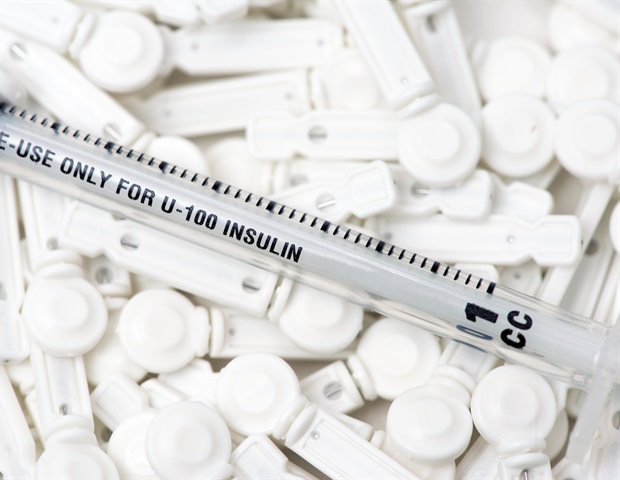Researchers at Stanford Medicine have shown they can measure thousands of molecules — some of which are signals of health — from a single drop of blood.
The new approach combines a microsampling device — a tool used to self-administer a finger prick — with "multi-omics" technologies, which simultaneously analyze a vast array of proteins, fats, by-products of metabolism and inflammatory markers.
"Even more importantly, we've shown you can collect the blood drop at home and mail it into the lab," said Michael Snyder, PhD, director of the Center for Genomics and Personalized Medicine and senior author on the research, which was published in Nature Biomedical Engineering on Jan. 19.
Unlike finger-prick testing for diabetes, which measures a single type of molecule (glucose), multi-omics microsampling gives data about thousands of different molecules at once.
The research sounds similar to a well-known approach promoted in the past for testing a single drop of blood, but there are important differences: While the earlier approach was based on replicating existing diagnostic tests, multi-omic microsampling uses a different type of data analysis based on a technology called mass spectrometry, which sorts molecules based on their mass and electronic charge. In addition, the data analysis is performed in a lab, not in a portable box.
Less blood, more insights
Instead of focusing on any single protein, metabolite or inflammatory marker, the growing field of "omics" research takes a broader, systems-biology approach: analyzing the whole spectrum of proteins (the proteome), fats (the lipidome) or the by-products of metabolism (the metabolome). Although recent advances have made this data analysis more robust and efficient, the real-world usefulness of multi-omics research has been limited by the difficulties of sample collection, among other challenges. To measure someone's response to a food or medication, many samples in a short time span may be needed; currently, sampling requires traveling to a clinic for an intravenous blood draw of 10 to 50 milliliters.
For the study, we asked participants to take blood samples five times in just four hours. Traditionally that would have meant putting in a catheter and pulling out a lot of blood each time. By the fifth draw, your participants would have less iron and fewer red blood cells."
Michael Snyder, the Stanford W. Ascherman, MD, FACS Professor in Genetics
The researchers wanted to know whether they could drastically reduce the volume of blood used for multi-omics analysis, but still profile thousands of molecules. After testing a variety of microsampling devices, they chose one called the Mitra, a portable finger-stick device that draws 10 microliters of blood into a gel matrix. They then tested multiple extraction techniques to separate out the proteins, lipids and metabolites. A second separate microsample was used to measure inflammatory markers.
Omics eBook

"It wasn't at all expected that we'd be able to do this kind of analysis on such a small sample," said Ryan Kellogg, PhD, post-doctoral researcher in genetics and one of four co-lead authors on the paper. The other three co-lead authors are Stanford postdoctoral scholars Xiaotao Shen, PhD, Daniel Panyard, PhD, and Nasim Bararpour, PhD.
In a pilot study of two test subjects, the researchers were able to measure the levels of 128 proteins, 1,461 metabolites and 776 lipids from each microsample. They then monitored the samples for stability when they were stored at a variety of temperatures.
"Overall, very few proteins were unstable, regardless of temperature," Snyder said. Some of the lipids and metabolites broke down during storage at certain temperatures, but the majority were stable, he said.
When the researchers compared the multi-omics results obtained by microsampling with those from a traditional blood draw, they found the results from the two collection types to be similar for the vast majority of molecules. Confident that their multi-omic microsamples were reliable, the scientists next tested applications for the new technique.
Tracking individual metabolic responses to food
The researchers conducted a study that monitored the molecular impact of a nutrition shake, analyzing data from 28 participants for four hours after they consumed a defined quantity of carbohydrates, fats, proteins and micronutrients from the meal replacement shake.
"What we found is that people responded very, very differently to this mixture," Snyder said.
Different people can have drastically different metabolic responses to the same food, but standard blood tests don't give enough data to understand why.
Almost 50% of the compounds in the shake could eventually be detected in the blood of participants, and researchers were able to divide the participants into two major groups based on how quickly the molecules in their blood changed, with one group responding more quickly to the shake than the other. Participants with known insulin resistance were more likely to fall into the "fast responder" group.
Some participants also had an inflammatory reaction, with molecules involved in their immune response peaking about 30 minutes after consuming the shake.
"The ultimate goal of doing these detailed profiles is to give people information," Snyder said. "If you learn you're having an immune response to a particular food, you might be quite motivated to change your diet."
24/7 monitoring with wearable sensors
In the second experiment, the researchers took molecular monitoring a step further, by sampling Snyder's blood every one to two hours while he was awake for a week.
"After 98 samples, I'll admit my fingers were pretty sore." He also wore four different smart watches and a continuous glucose monitor to track his heart rate, activity level, sleep and food intake.
Stanford Medicine
Shen, X., et al. (2023) Multi-omics microsampling for the profiling of lifestyle-associated changes in health. Nature Biomedical Engineering. doi.org/10.1038/s41551-022-00999-8.
Posted in: Medical Science News | Medical Research News
Tags: Blood, Catheter, CT, Diabetes, Diagnostic, Diet, Food, Genetics, Genomics, Glucose, Heart, Heart Rate, Immune Response, Insulin, Insulin Resistance, Lipids, Mass Spectrometry, Medicine, Metabolism, Metabolite, Metabolites, Molecule, Nutrition, Protein, Proteome, Red Blood Cells, Research, Sleep, Spectrometry, Technology
Source: Read Full Article



